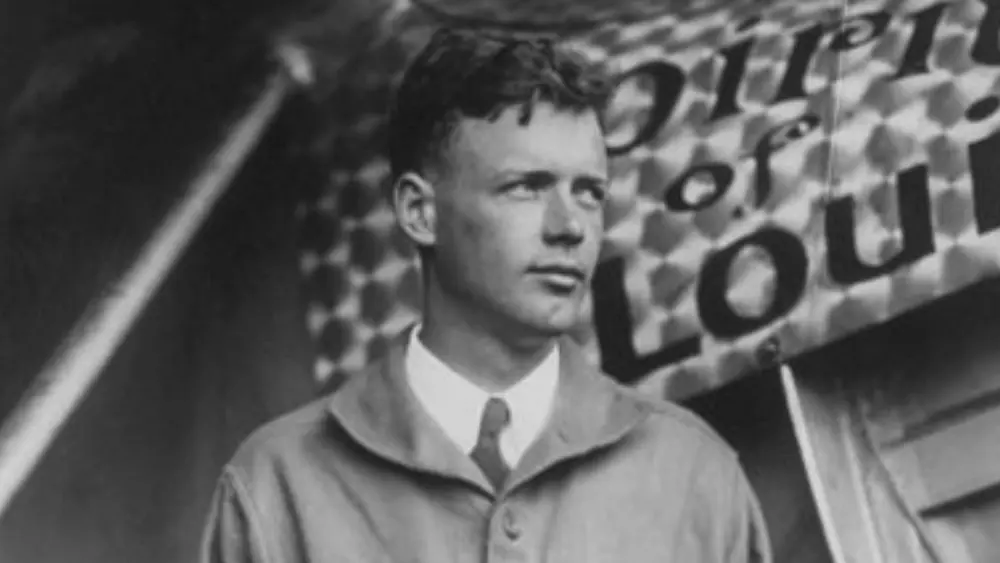Charles Augustus Lindbergh, born on February 4, 1902, in Detroit, Michigan, was a legendary American aviator, military officer, inventor, and explorer. He achieved global fame as the first person to complete a solo nonstop flight across the Atlantic Ocean, a historic feat that forever changed the world of aviation.
Early Life and Love for Aviation
Charles Lindbergh’s enduring love affair with aviation can be traced back to his formative years. In his Nebraska adolescence, Cheney had a crucial encounter with the world of flight that shaped his future pursuits. Attending a flying exhibition, Lindbergh was captivated by the spectacle of airborne machines defying gravity. This transformative experience would prove to be the catalyst for his lifelong devotion to aviation.
In 1922, Lindbergh decided to turn his passion into a profession and enrolled in a flying school. His journey into the world of aviation was marked by determination and a remarkable natural aptitude for piloting. As he honed his skills, it became increasingly evident that Lindbergh possessed the qualities of a gifted aviator. His early commitment to flight led to achieving an iconic feat in aviation history, cementing his legendary status in aviation annals.
Charles Lindbergh: The Spirit of St. Louis
In the annals of aviation history, the name Charles Lindbergh is forever synonymous with audacious feats of flight. In 1927, Lindbergh made history with the groundbreaking first-ever solo nonstop transatlantic flight, etching his name into the record books. With courage and determination, he piloted his custom monoplane, the “Spirit of St. Louis,” from Roosevelt Field in New York. His destination: the distant shores of Paris, France. After 33.5 grueling hours alone, Lindbergh’s triumphant landing in Paris marked an aviation historic moment, cementing his status as a global icon.
Lindbergh’s achievement secured the Orteig Prize, awarded to the first aviator to finish a nonstop New York to Paris flight successfully. Beyond the financial reward, Lindbergh’s transatlantic journey had an even greater impact. It captured the collective imagination of people worldwide, making him an instant international sensation. The “Spirit of St. Louis” and its pilot transcended ordinary flight, inspiring generations and redefining human aviation’s possibilities. Lindbergh’s daring flight serves as evidence of the strong human determination and the significance of advancements in aviation pioneering.
The Lindbergh Baby Kidnapping
The Lindbergh family, influential for Charles Lindbergh’s aviation feats, faced a harrowing nightmare in 1932 that garnered global attention. The tragedy unfolded when their beloved infant son, Charles Jr., was abducted from their New Jersey home. This heartbreaking event quickly became a sensationalized spectacle, capturing the hearts and fears of the nation and beyond. The Lindbergh baby’s kidnapping triggered a massive manhunt, as authorities and the public alike worked tirelessly to bring the child home safely.
Sadly, despite extensive efforts to secure his release, the Lindbergh baby tragically lost his life. Authorities discovered his lifeless body two months after the abduction and eventually apprehended the perpetrator. This tragic case marked a somber chapter in Lindbergh’s family history and highlighted fame’s complexities and vulnerabilities in tragedy’s wake. The kidnapper, caught and tried, received a death sentence carried out through execution, concluding a heart-wrenching, globally watched saga.
Charles Lindbergh: World War II and Isolationism
World War II marked a challenging and controversial period in Charles Lindbergh’s life. Contrasting his aviation fame, Lindbergh became a staunch isolationist during this global conflict, adopting a vastly different role. Opposing U.S. entry into WWII, Lindbergh delivered controversial speeches, wrote extensively, and engaged with organizations like the America First Committee. Lindbergh’s isolationist stance was polarizing, eliciting strong reactions from both supporters and critics.
Lindbergh’s isolationist stance drew considerable public criticism, often appearing out of touch with the war’s unfolding realities. However, they also illustrated his dedication to principles he deemed vital. Lindbergh’s role as a divisive figure during this period serves as a reminder of the complex and contentious nature of political discourse during times of international crisis and the enduring importance of individual conviction, even in the face of widespread disagreement.
Postwar Career and Environmental Advocacy
Following the conclusion of World War II, Charles Lindbergh’s life underwent a significant transformation. His once high-profile role in aviation had evolved, and he transitioned into a career as an aviation consultant and technical advisor. In this capacity, he played a pivotal role in the development of aviation technology, contributing his expertise to further the industry’s progress. Lindbergh’s dedication to aviation persisted, albeit in a more behind-the-scenes capacity, as he continued to be a driving force in advancing the field.
As he entered his later years, Charles Lindbergh redirected his focus toward environmental and conservation causes. This shift in his interests was notable, as he became an advocate for the preservation of natural resources and wilderness areas. His passion for environmental advocacy underscored his commitment to safeguarding the planet for future generations, marking yet another chapter in his multifaceted life that left a lasting impact not only in aviation but also in the realm of environmental stewardship.

Charles Lindbergh: Legacy and Impact on Aviation
Charles Lindbergh’s impact on aviation is unforgettable and continues to resonate today. His historic solo transatlantic flight in 1927 aboard the “Spirit of St. Louis” not only propelled him to global stardom but also ignited a spark in countless aspiring aviators and aerospace enthusiasts. Lindbergh’s audacious feat served as a symbol of human achievement and tenacity, embodying the very essence of exploration and adventure that aviation represents. His legacy endures not merely as a historical milestone but as a source of inspiration for generations of pilots and aerospace engineers who followed in his contrail.
Beyond his pioneering flight, Lindbergh’s contributions to aviation extended into the realm of technology and industry advancement. Charles Lindbergh’s expertise as an aviation consultant and technical advisor was crucial in advancing aircraft design and safety measures. His contributions helped shape the growth of commercial air travel. Beyond his daring feats, Lindbergh was deeply committed to pushing the limits of what was once thought impossible. His legacy continues to shape the future of aviation and leaves a lasting impact on the skies above.










